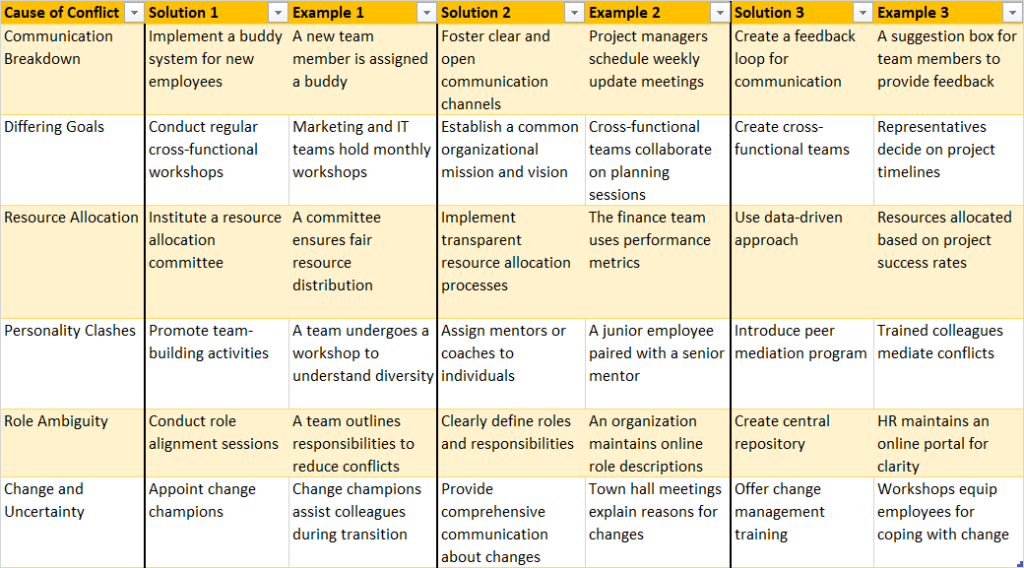
Conflict is a dynamic force that courses through the veins of every corporate environment. It emerges from the collision of diverse personalities, competing priorities, and the intricate web of relationships that weave together an organization’s fabric. While conflict itself is not inherently negative, unaddressed or mismanaged conflicts can fester, causing disruptions that reverberate throughout teams and projects.
As organizations strive for synergy and success, understanding the underlying causes of conflict is essential to fostering harmony and effective conflict management. This article explores the nuanced sources of conflict within the corporate landscape, providing insights into their origins, implications and solutions.
Causes of Conflict in the Corporate Workplace
- Communication Breakdown: Misunderstandings, poor communication, and unclear instructions can lead to conflicts. For example, a misinterpreted email can spark disagreements.
- Differing Goals and Priorities: When team members or departments have conflicting goals or priorities, it can result in clashes. For instance, marketing and sales teams may disagree on the emphasis of a campaign.
- Resource Allocation: Limited resources, such as budget or manpower, can lead to competition and conflicts among teams vying for the same resources.
- Personality Clashes: Different personalities, work styles, and attitudes can lead to friction, especially when individuals have contrasting approaches.
- Role Ambiguity: Unclear roles and responsibilities can cause confusion, leading to overlapping tasks and disputes.
- Change and Uncertainty: Organizational changes, such as restructuring or new leadership, can trigger conflicts due to uncertainty and resistance to change.
Stages of the Conflict Process
- Latent Conflict: At this stage, potential sources of conflict exist but are not yet acknowledged. It might involve underlying tensions between departments or teams.
- Perceived Conflict: Conflict arises when individuals or groups perceive differences or disagreements. This is when conflicts start becoming apparent. Example: A project manager perceives resistance from team members regarding a new project management tool.
- Felt Conflict: Emotions get involved, and individuals start experiencing stress, frustration, or anxiety due to the perceived conflict. Example: Team members feel frustrated about the implementation of the new tool, fearing its impact on their workflow.
- Manifest Conflict: The conflict becomes evident through behaviors such as arguments, disputes, or open disagreements. Example: Team members openly express their concerns about the new tool’s effectiveness during a team meeting.
- Conflict Aftermath: This stage involves the consequences of the conflict. It can lead to resolution, escalation, or lingering tensions. Example: The conflict leads to discussions among team members about finding a solution or seeking managerial intervention.
Solutions for Fostering Harmony – A Practical Way
Addressing the causes of conflict in the corporate workplace is essential for fostering harmony and a productive environment. Here are solutions for each of the common causes of conflict

~The Takeaway~
Understanding the intricacies of these causes and stages of conflict empowers organizations to preemptively address and mitigate conflicts, transforming potential crises into catalysts for growth and learning. By recognizing these triggers, organizations can foster an environment where conflicts are viewed not as threats, but as opportunities to refine communication, strengthen, and drive meaningful change. Implementing appropriate conflict management strategies at the right time can lead to healthier workplace dynamics, improved communication, and enhanced project outcomes. By incorporating the solutions shared above, organizations can create a comprehensive approach to conflict prevention and resolution. Customizing the solutions to fit the specific organizational culture and challenges ensures a proactive and effective conflict management strategy.
As a bonus, check out this article that explains how active listening and finding common ground can help resolve project disagreements.
